Anti-government protests resume in Colombia
Anti-government rallies have resumed in Colombia, with security forces clashing with protesters and making arrests.
Demonstrations took place in the capital, Bogota, and in major cities, including Cali and Medellin, on Tuesday.
A total of 11 people — 10 of them policemen — were injured in the clashes and nearly 100 people were arrested.
In the capital, police used tear gas and stun grenades against stone-throwing protesters, and police chief Oscar Atehortua said most of the arrests took place there.
Bogota Mayor Claudia Lopez said security forces were deployed in the old quarter of the city as night fell on Tuesday, with small groups turning violent in some neighborhoods.
Lopez, who took office on January 1, has set procedures to try to prevent clashes at demonstrations, which started in November last year and which have left four people dead. About 500 people have also been injured since the start of the protests.
Protesters have been calling for President Ivan Duque’s resignation over his plans for economic reforms and a lack of government action to stop corruption and police violence.
The demonstrators have also demanded that the government fully implement a 2016 peace deal with the Revolutionary Armed Forces of Colombia (FARC) rebels, which Duque has attempted but failed to modify.
The Colombian president has promised a “national conversation” on social policies after the demonstrations against his right-wing government caused casualties.
The protests in Colombia have coincided with demonstrations elsewhere in Latin America, from anti-austerity marches in Chile to protests over vote-tampering allegations in Bolivia.
The demonstrations in Colombia had last been held in early December, when anti-government sentiments largely dissipated, until now.
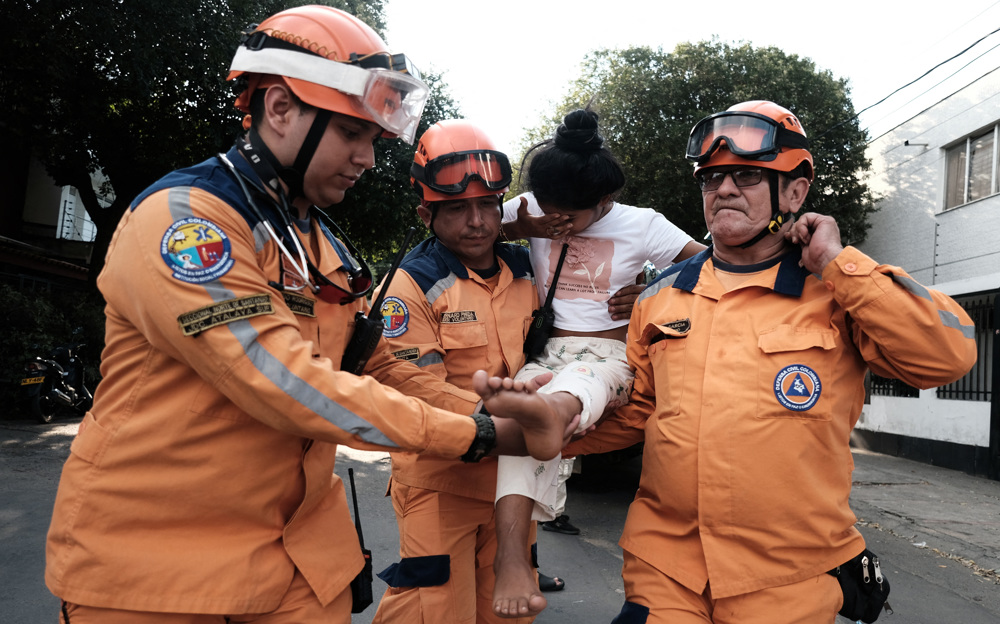
Over 80 people killed in Colombia as ceasefire between rebel groups collapses
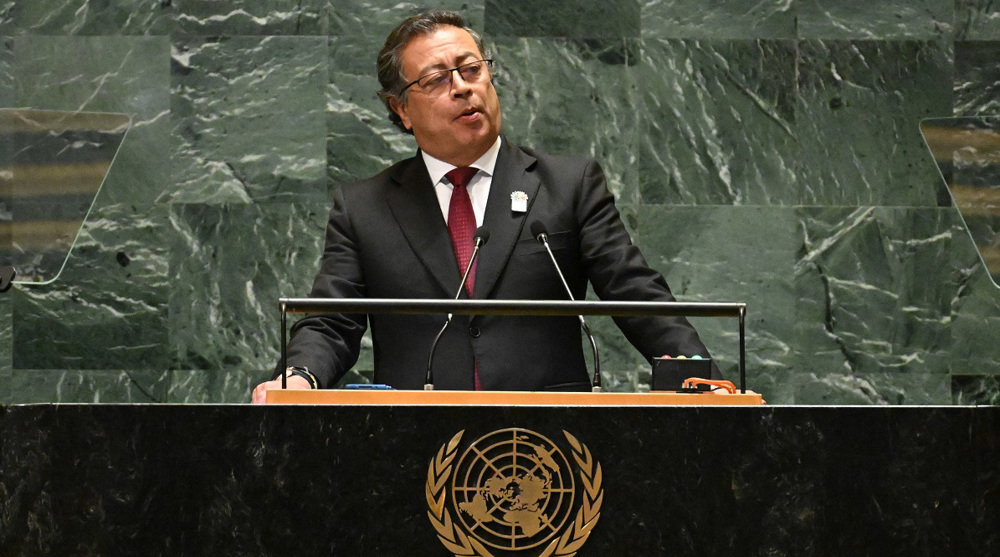
Netanyahu a 'war criminal', President Petro tells UN General Assembly
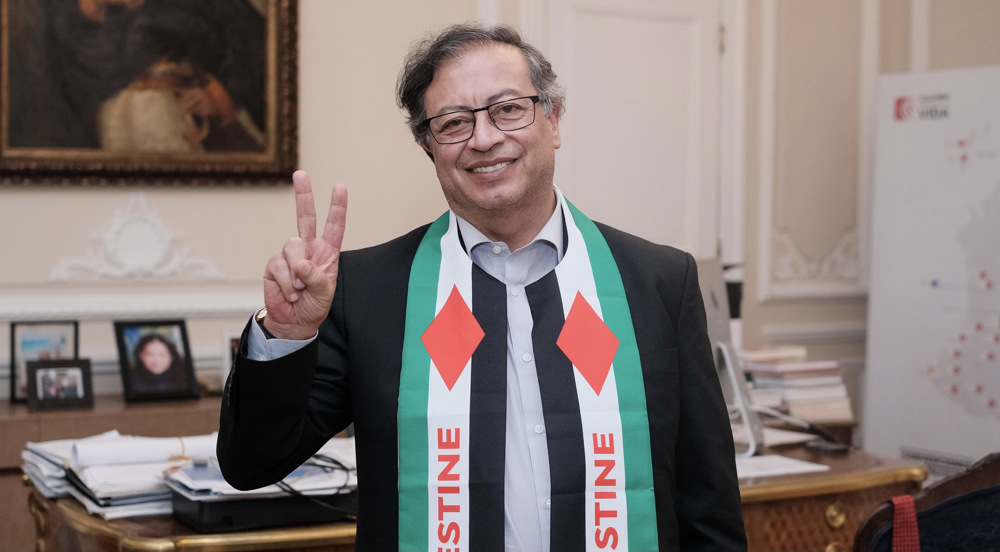
Dropping bombs on children in Gaza and not opposing war is anti-Semitic: Petro
Columbia graduate detained without evidence of wrongdoing
Israel targets photojournalist’s home in ‘relentless’ Gaza bombing
US intensifies bombing Yemen amid ground invasion plans
Scores of Syria Alawites killed as HTS sectarian violence continues
US approves potential sale of Stinger missiles to Morocco
Iran summons Argentine envoy over accusations against top officials
VIDEO | Rally against another Columbia student arrest held in New York
VIDEO | Press TV's news headlines






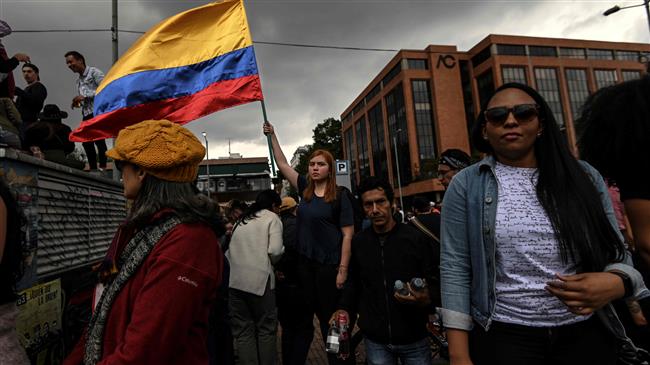
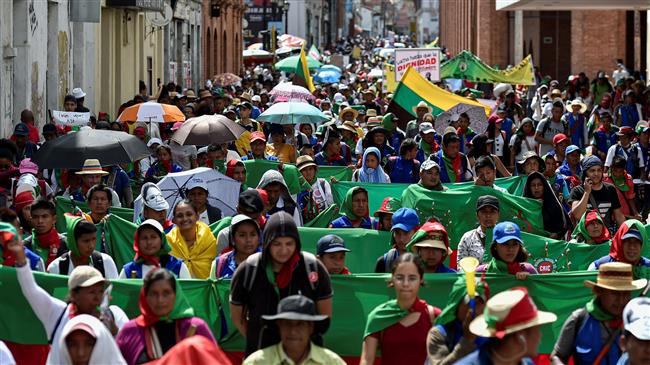
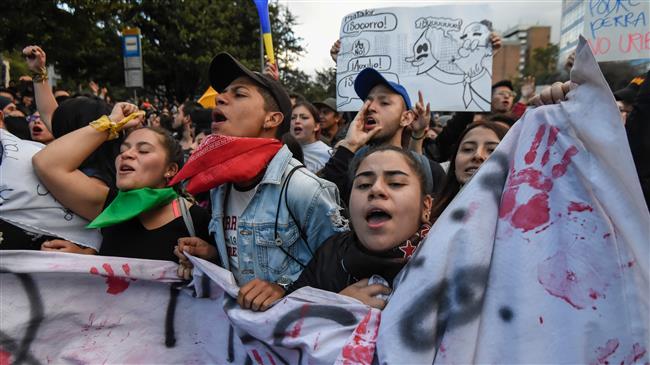
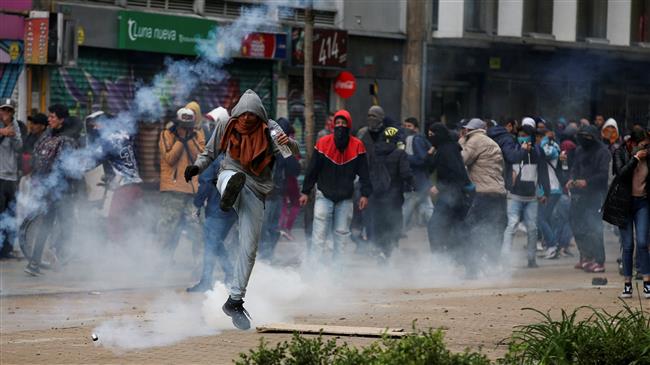

 This makes it easy to access the Press TV website
This makes it easy to access the Press TV website